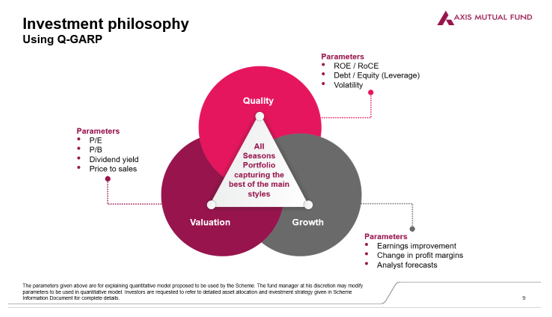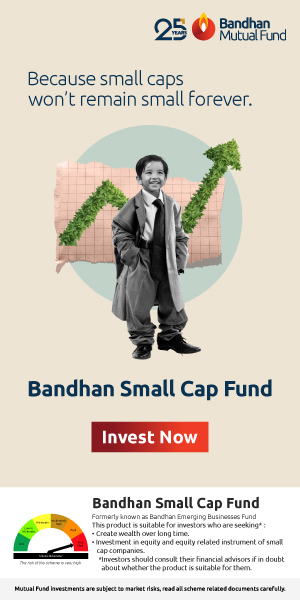Quant Fund can also be considered for core portfolio
BFSI Industry Interview

Mr. Karthik Kumar joined Axis AMC in June 2019. He has led the AMC’s efforts in developing the Quantitative vertical for the fund house. Since July 2023, he has been responsible for managing the Axis Quant Fund and Arbitrage Fund.
He has widespread experience building and managing Quantitative strategies for India and the Asia Pacific Region. Prior to joining Axis AMC, he was based out of Hong Kong, working as a Portfolio Manager at SilverTree; and managing Long only & long-short funds for Asiya Investments. He started his career with Asiya Investments in 2008.
He is done his MBA from Krannert School of Management, Purdue University, USA and B.E in Mechanical Engineering from Mumbai University (Sardar Patel College of Engineering). He is also a CFA charter holder.
In a candid interview with AdvisorKhoj.com, he answered various questions about Axis Quant Fund that we have been getting from our readers.
Many people need clarification on the concept of a quant fund. How would you like to address them and explain a quant fund?
The quantitative process is a systematic approach that relies on data from different sources to help make stock selection and portfolio construction decisions. A good comparison would be parallels between automatic transmission and manual transmission in cars. While manual transmission has its own benefits, Automatic transmission decides how and when to switch gears based on a range of parameters like the car’s speed, etc. Ultimately, the aim is to provide a smooth ride using the same inputs that would influence the driver’s decision-making process. While initially there was scepticism, now, increasingly, car buyers prefer it for the comfort it offers. Similarly, Quantitative processes use a lot of bottom-up stock-level data of various types, and the models have strong linkages to Fundamental drivers of stock returns. The key differentiator is the rule-based and non-biased approach to fund management. Most critically, a Quantitative process has the following salient features.
- Transparent Process: Data inputs, underlying thesis & approach can be transparent.
- It is based on a combination of
- forward-looking data for, e.g. Growth in EPS etc.,
- concurrent data – for instance, through price and volume analysis and finally,
- historical data available in Financial statements, i.e. balance sheet, income statement, cash flow statements etc.
- Reduces behavioural biases: Systematic approach to portfolio construction and rebalancing reduces unnecessary human interference and portfolio manager biases from seeping in.
- Active Monitoring & Re-evaluation: The process & portfolio are constantly reviewed and re-evaluated as markets are dynamic.
- Risk is monitored at a portfolio and stock level. Actions may need to be taken in case of stock-specific events outside the model’s scope.
- New data sources and signals are constantly evaluated in order to improve the model and overall process.
How is a quant fund different from other passive funds?
A quantitative approach to Fund Management is like a toolbox. One can use this toolbox to design various products, including Active or Passive Funds. This is akin to a Multicuisine Kitchen. The chef can use the kitchen and the tools in it to cook a variety of Indian and world cuisine. In this instance, the chef, Fund Manager, decides what kind of Cuisine, i.e. Type of fund (active or passive), to create.
Quantitative strategies can be employed to manage active funds, as in our case, and do not necessarily mean passive or an alternative to passive funds.
Can you explain the Axis Quant Fund? What parameters do you consider?
Axis Quant Fund is an active product with an approach rooted in fundamentals, i.e., one in which Fundamental parameters play a critical role in the bottom-up stock selection process. We call our strategy Q-GARP, i.e. to invest in a portfolio of Quality stocks with good Growth but at Reasonable Prices. Hence each stock in our universe is ranked based on three parameters 1.) Quality 2.) Growth & its Momentum, and 3.) Valuations. A total score is then calculated for every stock based on the combination of the above parameters. The total score predicts future returns with a higher score indicative of higher expected returns and vice versa.
Further, while deciding the weight of the stock in the portfolio, we consider not just returns but also a risk of the stock. Thus, the portfolio is designed based on an optimal balance between return and risk. Hence the Beta of Axis Quant Fund, a measure of market risk, has consistently been low.

How often can the logic of the quant fund change? Which aspects of the quant logic will never change?
As with a Fundamental Manager, a Quantitative Fund will also have its preference for a style, e.g. Value, growth, momentum etc., or, in our case, a combination of styles, i.e. Q-GARP, a portfolio of quality stocks with good growth but at reasonable prices. This foundational approach to Fund Management should remain the same in a Quantitative process.
However, just like a Fundamental Portfolio Manager is looking for new ideas and ways to evaluate, a Quantitative Fund Manager constantly researches new data sources and signals within the boundaries of its core ideology to identify new opportunities. The model will thus change depending on the findings of this research process. Hence models undergo changes over a longer time horizon rather than being subject to frequent short terms revisions.
How often do you rebalance the portfolio? Is there a deviation level that you have fixed post which you would review the fund?
This is a systematic process where the review & rebalance will happen at a pre-determined frequency with a set range of turnover. Axis Quant Fund is reviewed at least once every month so that the portfolio and stocks in it are regularly evaluated against new information and opportunities available in the market. We like to be more proactive about the process and hence don’t wait for the deviation to hit a fixed level to initiate the same.
Can the fund go high in cash? What is the cash range that one will likely find in the fund?
Axis Quant Fund will make small cash calls. The Fund will have enough cash for liquidity purposes but will otherwise be largely invested. The Fund aims to outperform the benchmark (BSE 200TRI) by superior stock selection and not through cash timing. The cash limits will be in line with investment policy.
A general question for our readers, if they are investing in any quant fund, how long or how much of underperformance should not trouble them and at what point should they evaluate their investments?
One should evaluate Axis Quant Fund just like other mainstream funds, as for an investor, it is all about opportunity cost. This also means that:
- Investors should invest for the longer term rather than for a quick buck, especially as our strategy is meant to outperform across cycles. I define Longer-term investors as someone with 3–5 year horizon.
- As for ongoing evaluation, one should look at the Fund’s positioning, it’s out(under) performance and the extent of it vis-à-vis the benchmark over a cycle and not based on monthly numbers. Because exiting a strategy based on a short-term review period means possibly locking in short-term gains (losses) while leaving lot more on the table.
In your opinion, to what size can the fund grow, at which point would you review the strategy?
We at Axis intend to champion this category through our offering Axis Quant Fund and so have designed the product for a substantially large capacity. This is evident from the fact that allocation to large cap in the portfolio has ranged between 50%-75% while mid-cap has constituted 10-30% of the portfolio. Given this distribution, increasing fund size shouldn’t be a challenge for the foreseeable future.
However, even if we were to hit that critical level, the model and the approach will not have to change, only stock position sizes may have to be reviewed. In any case, we are far away from our limits and when we do hit the threshold, it will be a good problem to have, from a product and category perspective.
How would you place Axis Quant Fund in risk parameters compared to the other active funds?
As mentioned, the fund has a portfolio construction process that balances out both return and risk. Hence the Beta of the portfolio, so far, has been meaningfully lower throughout the fund’s life, i.e., investors get better risk-adjusted returns.
On a standalone basis, the risk of Axis Quant Fund is similar to the risk of Flexi-cap or Multi Cap category fund as the allocation to market cap is very similar with approx. 50-75% for large-cap, 10-30% for Mid Cap and 0-15% for small cap.
From a risk perspective, Investors or allocators should consider Axis Quant Fund a suitable offering for clients who would be happy to invest in Flexi Cap / Multi cap category over a longer-term horizon.
Mutual Fund Investments are subject to market risk, read all scheme related documents carefully
Recent Interviews
-
Partner Connect by Advisorkhoj with Mr Amit Kalra Glorious Path Pvt Ltd New Delhi
Dec 5, 2025
-
Partner Connect by Advisorkhoj with Mr Alok Dubey PrimeWealth Pune
Dec 1, 2025
-
In Conversation by Advisorkhoj with Ms Aparna Shanker Chief Investment Officer Equity The Wealth Company Mutual Fund
Nov 28, 2025
-
In Conversation by Advisorkhoj with Mr Sanjay Bembalkar Head Equity Union MF
Nov 28, 2025
-
In Conversation by Advisorkhoj with Mr Arjun Khanna Equity Fund Manager Kotak Mutual Fund
Nov 17, 2025
Fund News
-
Zerodha Mutual Fund launches Zerodha Nifty Short Duration G Sec Index Fund
Dec 26, 2025 by Advisorkhoj Team
-
Groww Mutual Fund launches Groww Nifty Chemicals ETF
Dec 26, 2025 by Advisorkhoj Team
-
DSP Mutual Fund launches DSP Nifty Next 50 ETF
Dec 19, 2025 by Advisorkhoj Team
-
DSP Mutual Fund launches DSP Nifty 500 Index Fund
Dec 19, 2025 by Advisorkhoj Team
-
Kotak Mahindra Mutual Fund launches Kotak Nifty Next 50 ETF
Dec 18, 2025 by Advisorkhoj Team





